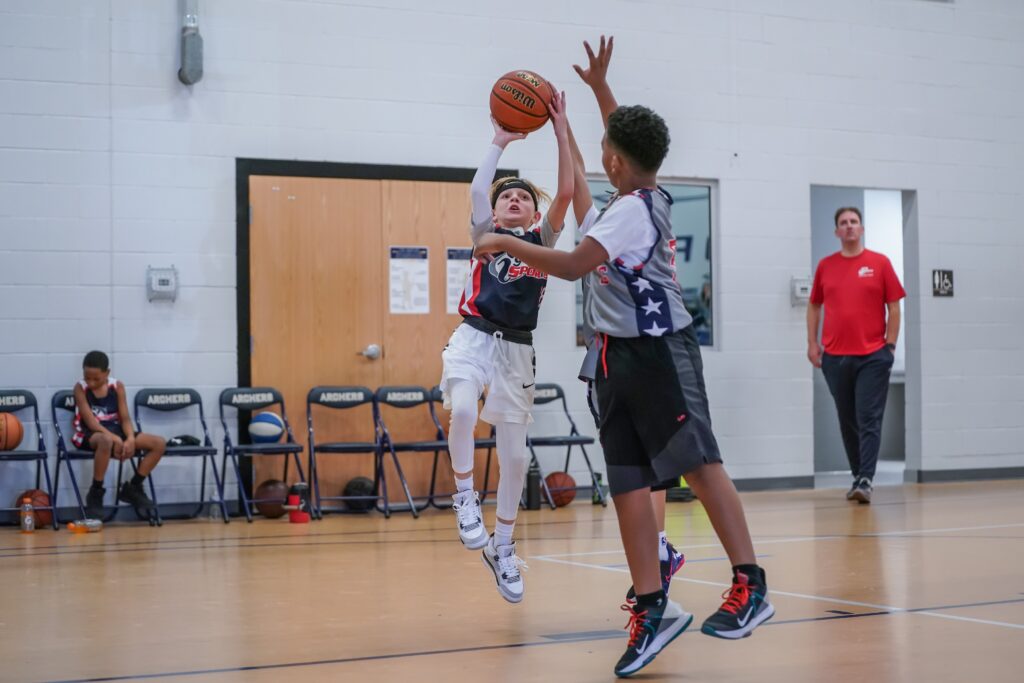Chances of Getting an Athletic Scholarship
Every year, countless families invest significant time and money into youth sports with the dream that their child will one day earn a college scholarship. However, the reality is that the odds of receiving an athletic scholarship are incredibly slim. As a middle school and high school coach, I ask my athletes to raise their hands if they want to receive a scholarship and play a sport in college. Every season, nearly all of them raise their hands. I ask them to put their hands down and share that less than 2% of high school athletes receive athletic scholarships. This is often their first time hearing these statistics, so we are now educating parents on this as well.
Statistics of College Athletic Scholarships
To understand why youth sports participation seldom results in college scholarships, it’s essential to look at the statistics:
1. Scholarship Availability:
According to the National Federation of State High School Associations (NFHS), there are over 7.9 million high school athletes in the United States. However, only around 480,000 of these athletes compete at the NCAA level. Of those, only about 180,000 receive any form of athletic financial aid.
2. Scholarship Size:
The National Collegiate Scouting Association (NCSA) notes that the average athletic scholarship is less than $11,000 annually. This amount often covers only a fraction of the total cost of attending college, which can exceed $50,000 annually at some private institutions.
3. Total Athletic Scholarship Funding:
Education Data Initiative reports that while over $2.7 billion is awarded annually in athletic scholarships, this sum is spread across numerous sports and athletes, making substantial awards rare.
Why Youth Sports Don’t Inherently Lead to Scholarships
Many parents and young athletes believe excelling in sports is a guaranteed ticket to a full-ride scholarship. However, the reality is scholarships are hard to come by.
Limited Full-Ride Scholarships:
Full-ride scholarships are rare and typically reserved for marquee sports like football and basketball. Even within these sports, only a fraction of the players receive full scholarships. For most other sports, partial scholarships are the norm.
Equitable Distribution:
Most colleges have a lengthy list of sports for both men and women. This means that scholarship funds must be distributed across a wide range of sports from football to rowing and anything in between. This limits the amount available for any one athlete on any team including the more popular sports.
Best Practices for Aspiring College Athletes
Given the challenging odds, aspiring college athletes and their families should adopt a strategic approach to the college recruiting process:
1. Early Planning:
Start the college planning process when your athlete decides they want to pursue this path. Research potential colleges, their sports programs, and their scholarship offerings.
Be realistic about the level of play and the types of schools that might be a good fit. Everyone dreams of a NCAA Division I scholarship, but be open minded and consider Division II, Division III, and NAIA schools which also offer athletic scholarships.
2. Academic Excellence:
Maintain strong academic performance. Many schools offer academic scholarships that can be combined with athletic scholarships, making college more affordable and scholarships slightly more attainable.
3. Keep Realistic Expectations:
Knowing the realistic chances of your kids getting a scholarship as you get into recreational sports and travel teams is important. It’s a good reminder to not put too much pressure on them to achieve that scholarship, especially at a young age. Putting pressure on young kids by making the goal of youth sports a scholarship can push them away from sports instead of motivating them to stick with it.
Realistically, the goal of youth sports is for youth athletes to have fun and find a sport they’re passionate about. A scholarship is a result of that goal! Having fun and finding a sport they are passionate enough to play long-term and motivated enough to play at a higher level is what may realistically lead them to that admirable achievement. In the meantime, if your child shows interest in the path of an athletic scholarship, talk to them about the statistics and keep their expectations realistic too.
While the dream of a sports scholarship is enticing, the reality is that very few athletes will receive significant financial aid for their athletic talents alone. The focus should be on using sports as a means to develop important life skills and find a passion they will want to participate in as long as they can. By understanding the landscape and setting realistic goals, families can create a positive environment for young athletes to play sports, grow their skills, and achieve their goals.
About the Author

Tyler Munoz
Manager Of Sport, i9 Sports®
Tyler is responsible for creating and implementing national training programs for coaches and over 240 franchisees to achieve the company’s mission to help kids succeed in life through sports.
Tyler grew up in Modesto, California, playing baseball, basketball and football from the age of 5. Sports have always been at the center of his life and have been something that he has dedicated his life to making a positive impact in.
He discovered his passion - supporting coaches to ensure they can provide a quality sport experience to the athletes that they coach during his education at California State University, Fresno. He earned his Master of Arts in Kinesiology – Sport Psychology and his Bachelor of Arts in Political Science with a Minor in Sport Coaching from California State University, Fresno.
After graduating, Tyler spent a year in New Zealand and Australia, where he studied and participated in the two countries’ sport environments, athlete development systems, and coaching models.
After his travels, he joined the United States Olympic and Paralympic Committee’s (USOPC) Coaching Education Department as the American Development Model and Youth Development fellow. Tyler was able to collaborate and coordinate sport development projects with several National Governing Bodies and assist the Coaching Education team with creating and updating resources related to coach training and the American Development Model.
Tyler continued to consult with the USOPC on initiatives related to the American Development Model the Quality Coaching Framework and ultimately, developed an online course, Foundations of the American Development Model. In 2020, he accepted a position with USA Football as the Senior Manager of Coach Education.
During his three years there, he was able to redesign the organization’s coach education certification, which led to USA Football achieving its’ one millionth coach certification in 2022. Tyler has coached football, baseball, and basketball at all levels of sport (recreational, scholastic, national, and international) throughout his life and is passionate about giving back to the communities in which he has lived.
Presentations and Awards:
College of Health and Human Services- Outstanding Project Award
Presented graduate project at the 39th Annual Central California Research Symposium
Olympic & Paralympic Coach Magazine Spring 2020- ADM & Me: Insights in Learning from my USOPC Fellowship
Presented at the USA Football National Conference 2020
Presented at the National Post Olympic and Paralympic Conference of Sport & Science at the Wingate Institute in Israel
What Does Fun Look Like? - Interview with Athlete Era
